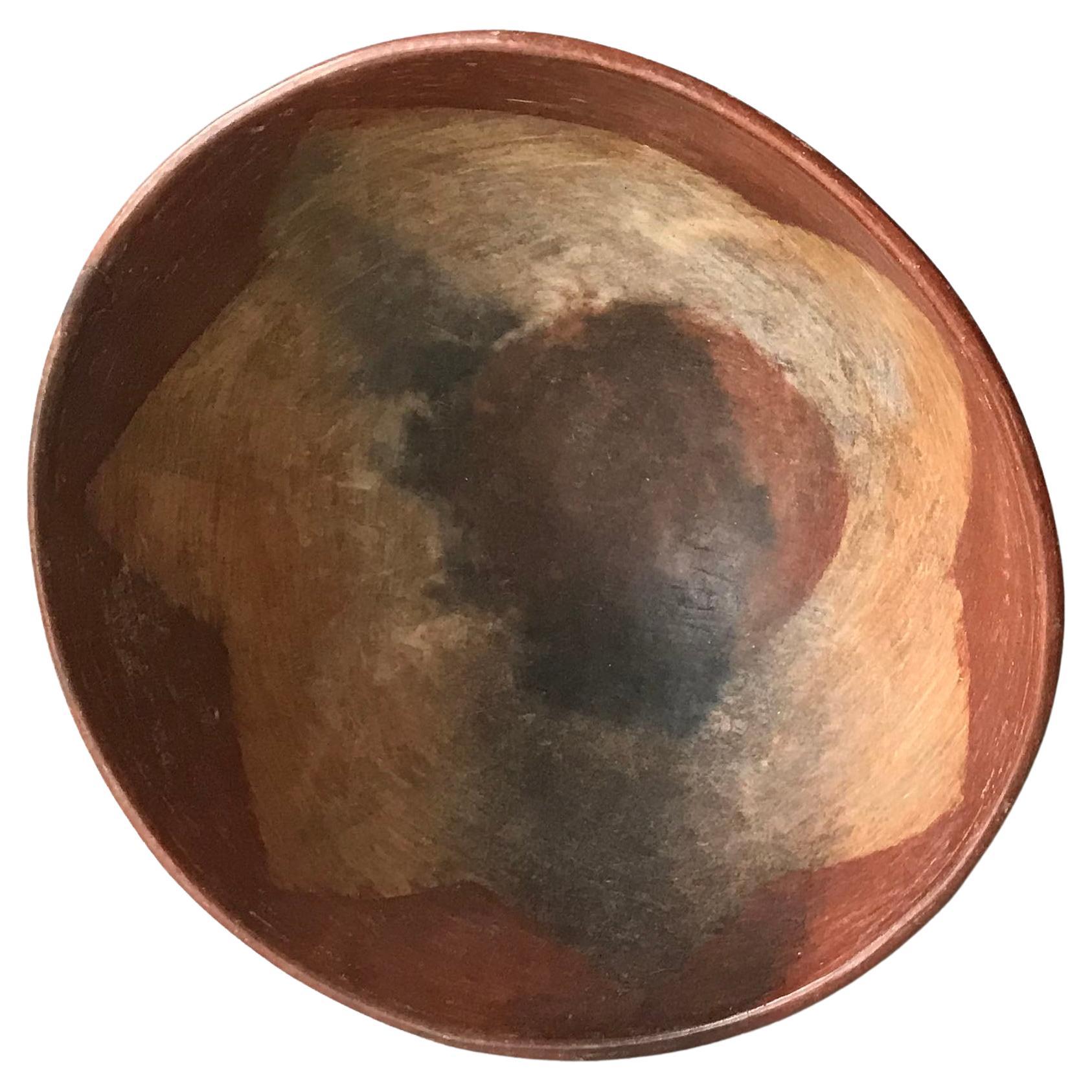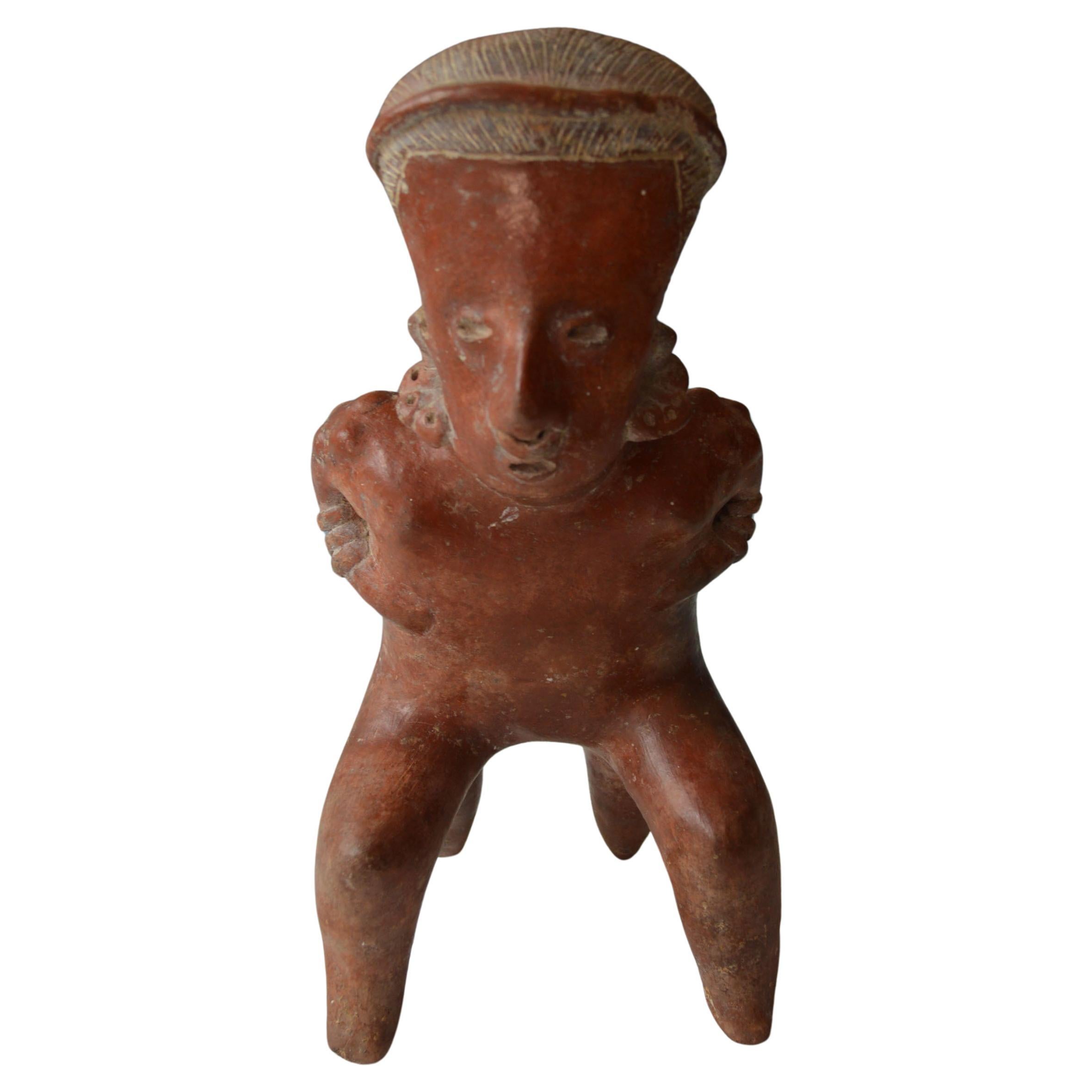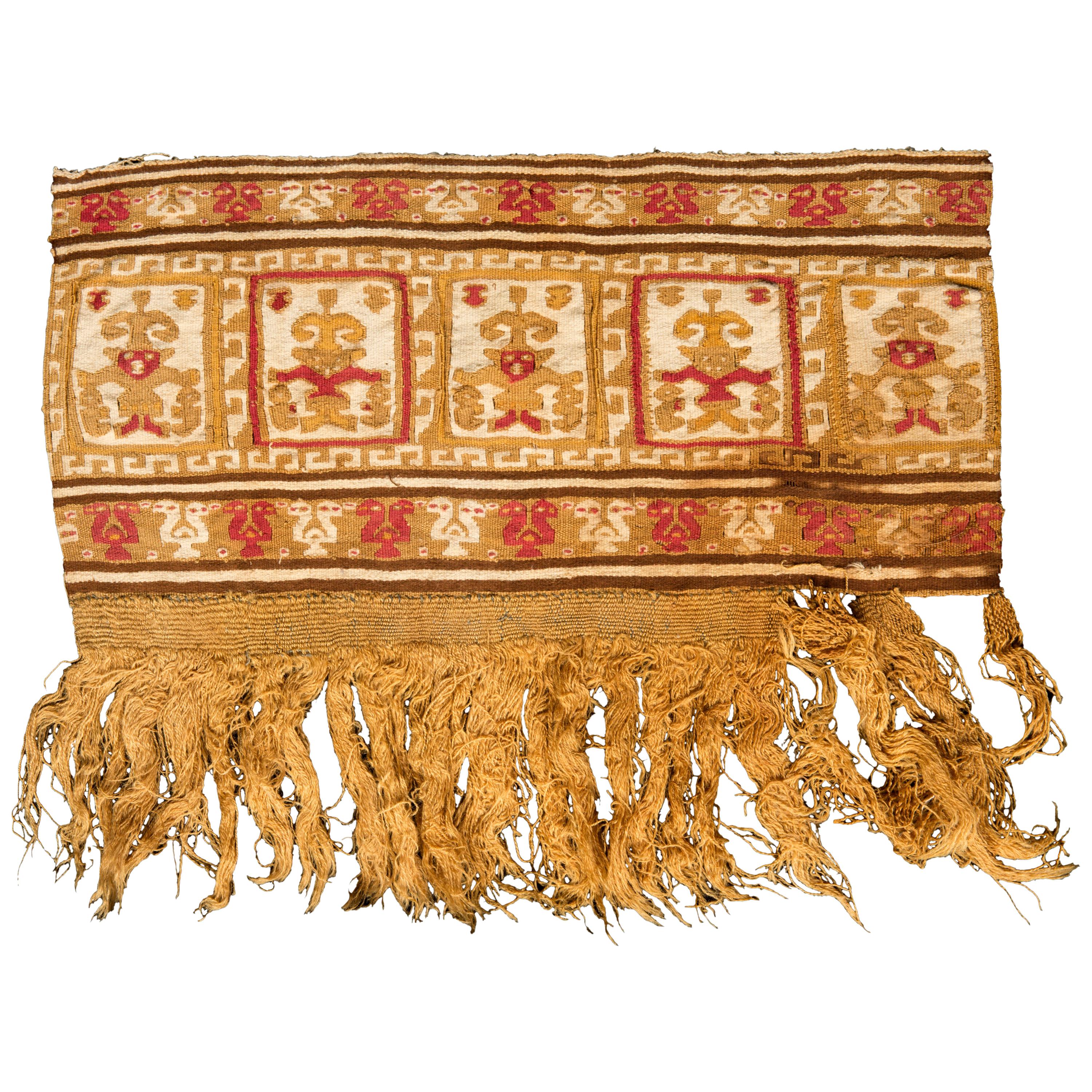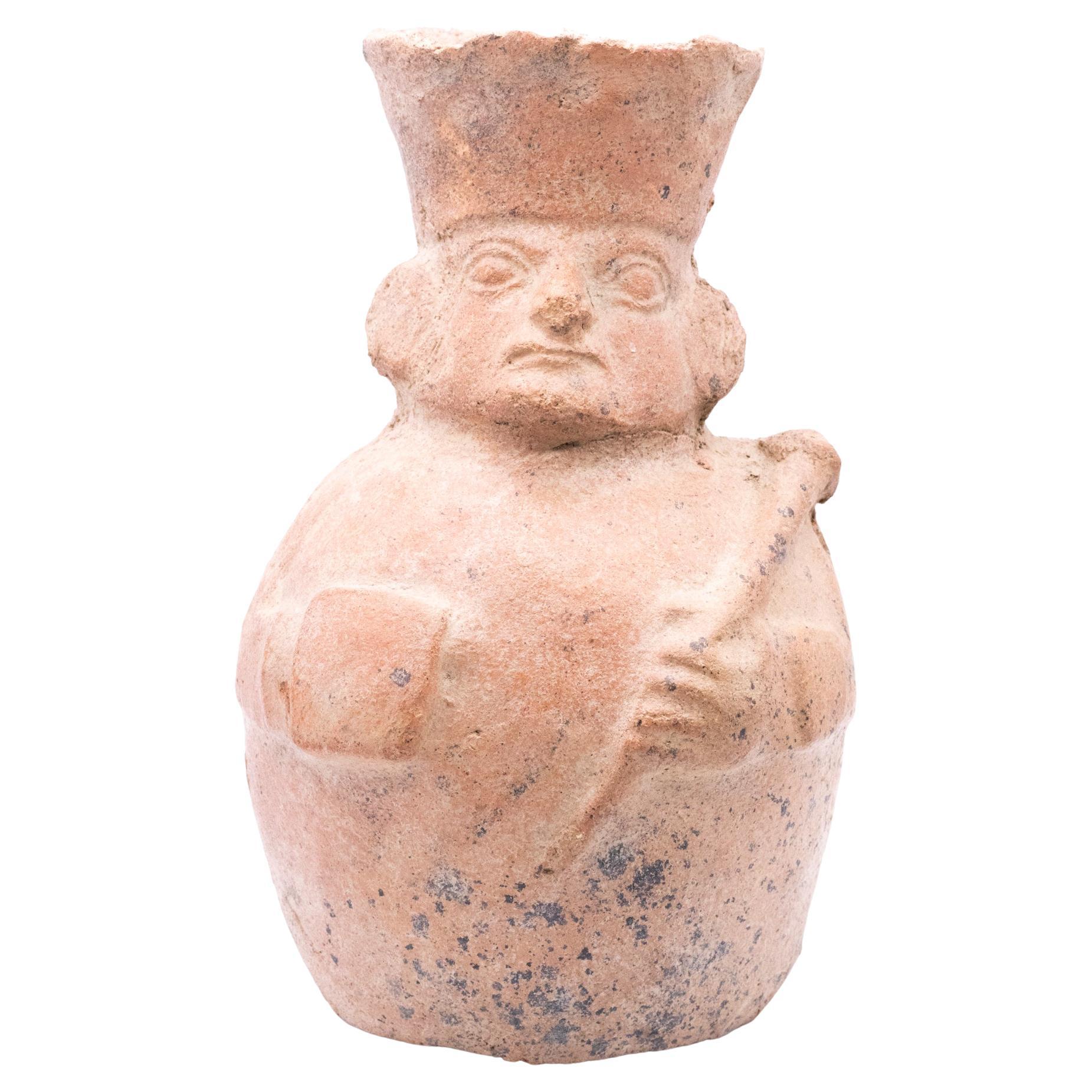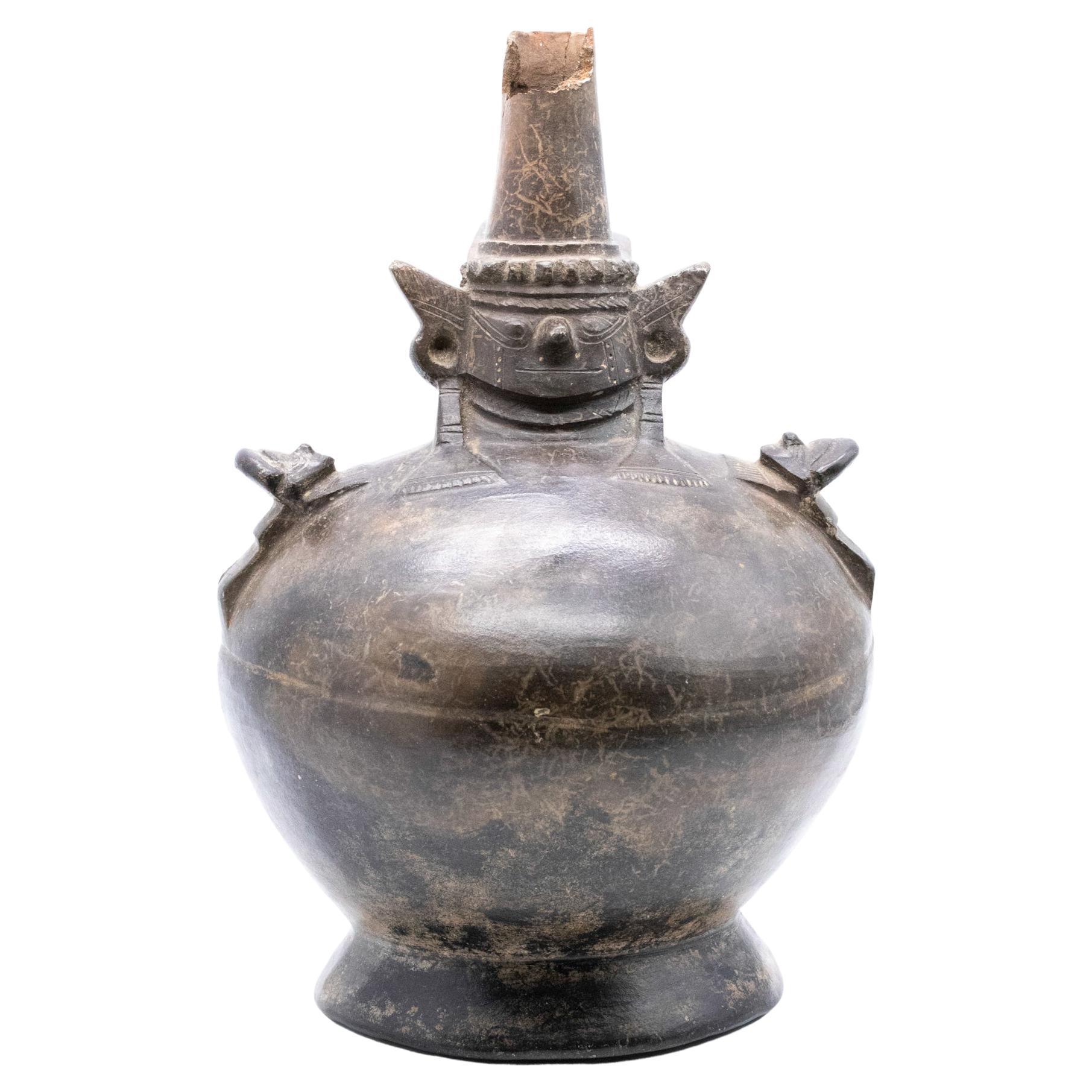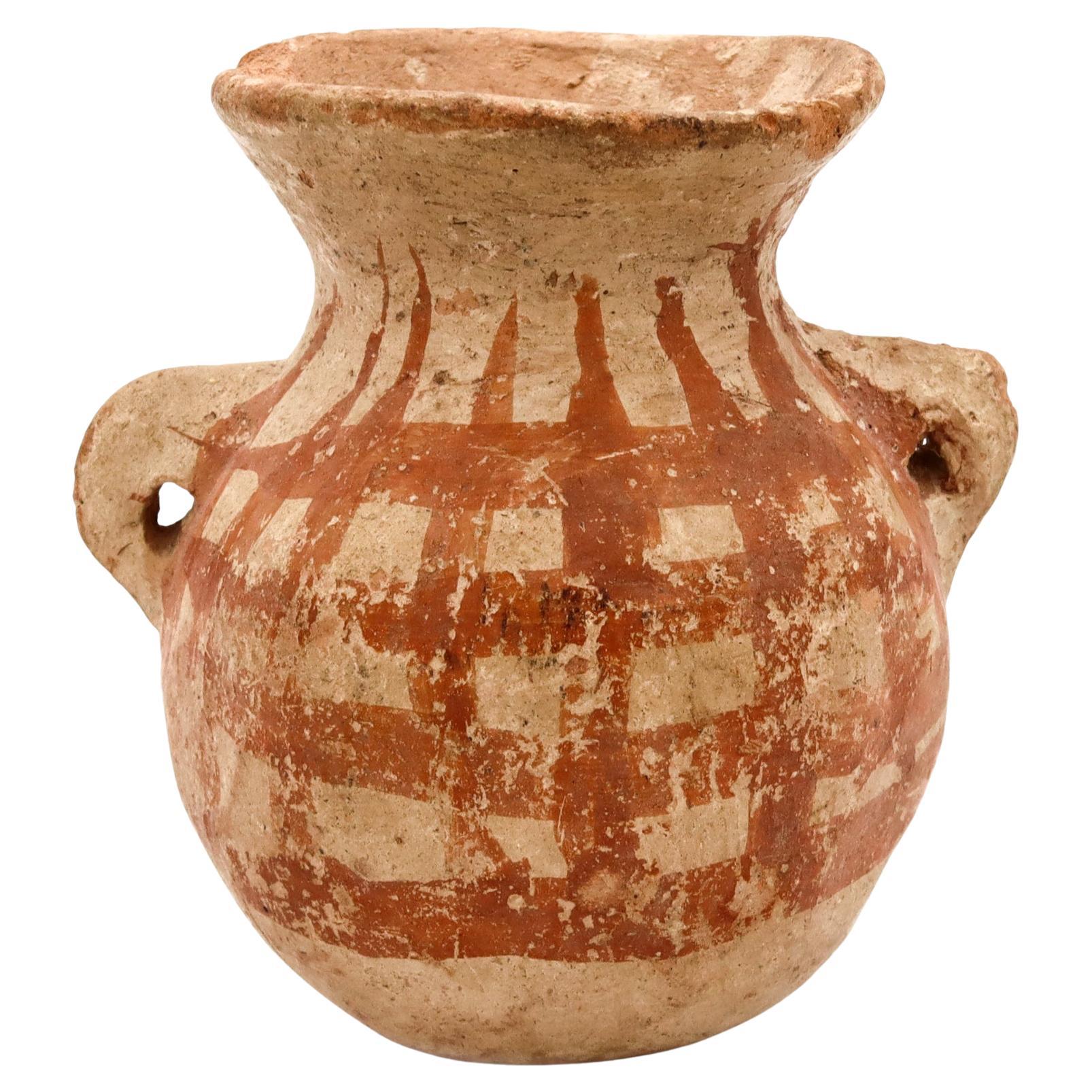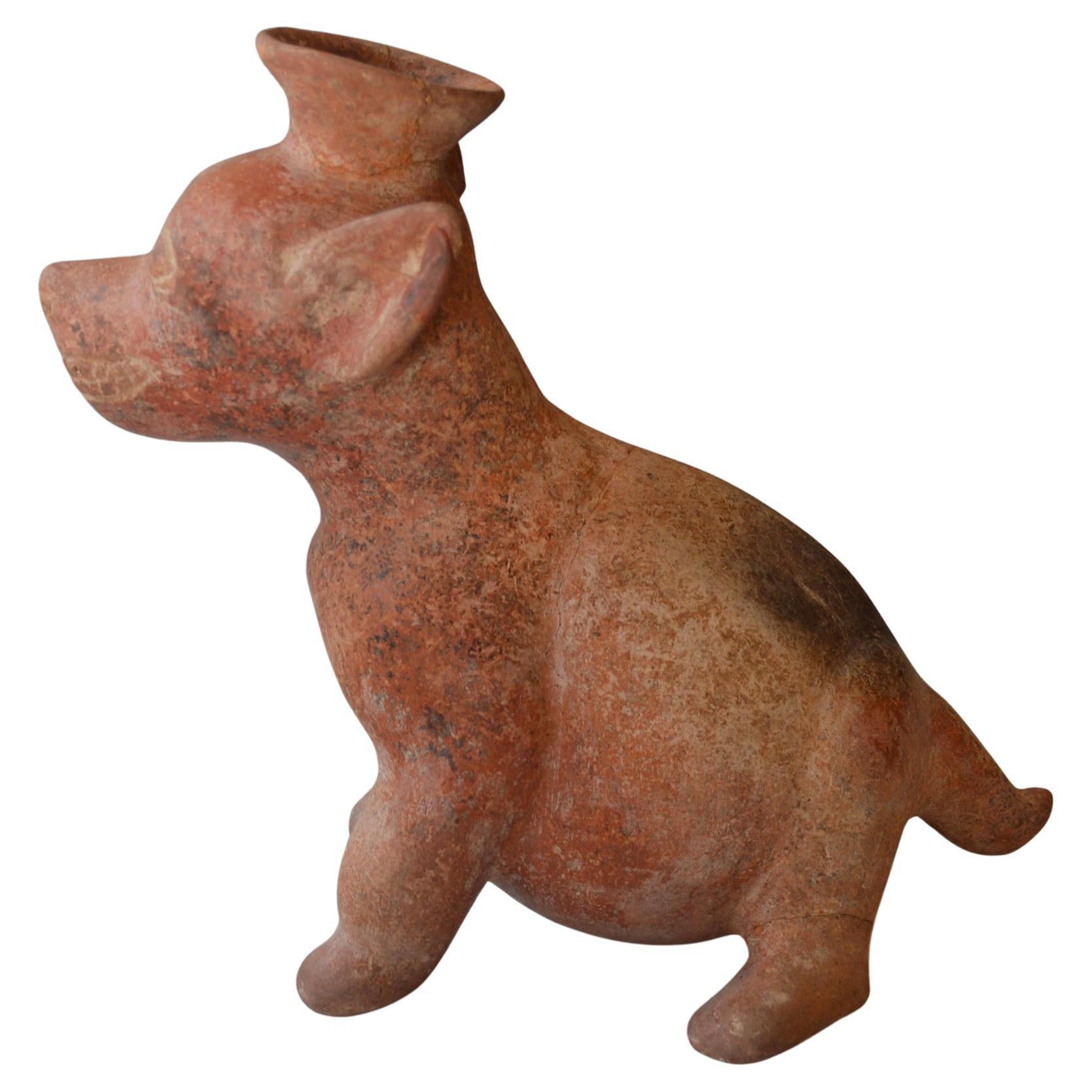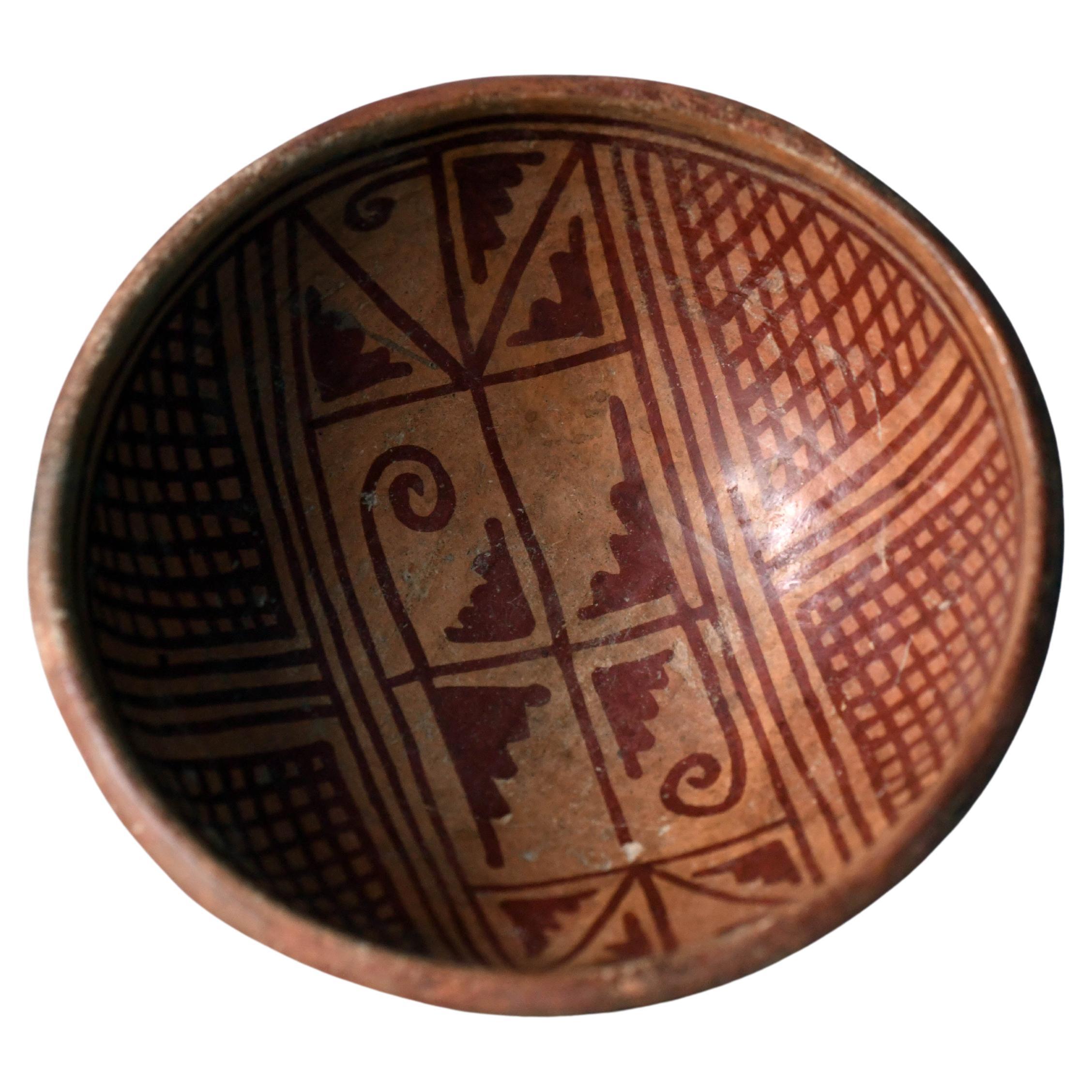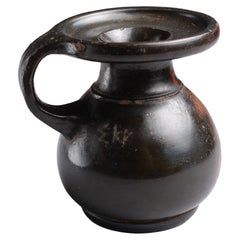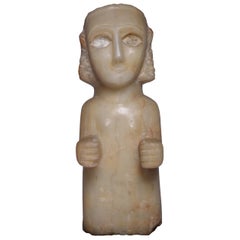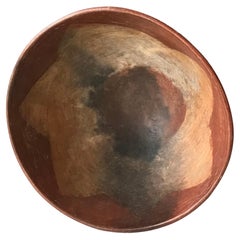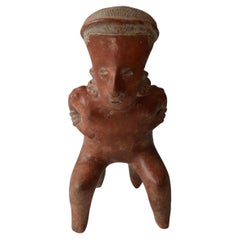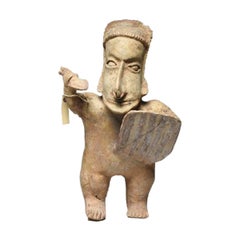
Ancient Pre-Columbian Nayarit Painted Pottery Warrior Figure, 100 BC
View Similar Items
Want more images or videos?
Request additional images or videos from the seller
1 of 7
Ancient Pre-Columbian Nayarit Painted Pottery Warrior Figure, 100 BC
About the Item
- Dimensions:Height: 23.75 in (60.33 cm)
- Place of Origin:
- Period:
- Date of Manufacture:100 BC-250 AD
- Condition:Minor losses. Restored from fragments with some overpainting. Losses to proper left arm and nose.
- Seller Location:London, GB
- Reference Number:1stDibs: LU105221287834
About the Seller
5.0
Recognized Seller
These prestigious sellers are industry leaders and represent the highest echelon for item quality and design.
Established in 2008
1stDibs seller since 2014
100 sales on 1stDibs
Typical response time: 8 hours
Associations
LAPADA - The Association of Arts & Antiques DealersInternational Confederation of Art and Antique Dealers' AssociationsThe British Antique Dealers' Association
More From This SellerView All
- Ancient Greek Corinthian HelmetLocated in London, GBCorinthian helmet with Bull Horns and Lotus Flower Decoration. Archaic Period, c.550-500 BC. Cast, hammered and incised bronze. An exceptionally well preserved example of one of the most iconic ancient Greek...Category
Antique 15th Century and Earlier European Classical Greek Mounted Objects
MaterialsBronze
- Ancient Greek Perfume BottleLocated in London, GBAthenian Black-glaze perfume pot with inscription Athens, c. 425-400 B.C. Terracotta Measures: Height: 9cm; diameter across lip: 7.5cm; width including handle: 9cm This 5th Cen...Category
Antique 15th Century and Earlier Italian Classical Greek Bottles
MaterialsPottery
- Ancient South Arabian Alabaster StatueLocated in London, GBSouth Arabian Calcite female figure 3rd Century BC to 1st century A.D. Calcite Alabaster height: 30.5 cm A magnificent alabaster female figure, a f...Category
Antique 15th Century and Earlier Yemeni Figurative Sculptures
MaterialsAlabaster
- Ancient Minoan Lotus Flower VaseLocated in London, GBMinoan Lotus vase Circa 1700-1450 B.C. Serpentine stone 8.9 cm x 14 cm ‘’The fruitful isle of Crete, well known to fame, Sacred of old to Jove's imperial name, In the mid-oce...Category
Antique 15th Century and Earlier Greek Other Decorative Bowls
MaterialsSerpentine
- Ancient South Arabian Alabaster InscriptionLocated in London, GBSouth Arabian Alabaster Inscription Calcite Alabaster circa 1st century A.D. ‘’Consequently, neither white marble of Paros nor any other stone which men admire can be compared with the precious stones of Arabia, since their whiteness is most brilliant, their weight the heaviest, and their smoothness leaves no room for other stones to surpass them.’’ - Diodorus Siculus, Library of History, Book II, 52.9 This inscription, finely worked on an alabaster tablet, is a remarkably well preserved example of Ancient South Arabian script, with its distinct bold, angular forms, written in the Qatabanic dialect - that is, the dialect spoken by the people of the kingdom of Qataban, which ruled much of modern day Yemen from the 7th Century B.C. to the 2nd Century A.D. The text, which reads: ‘[... ...]sa?d and Ma?add?i- / (of the lineage) of Hawfa- / She entrusted Anb- / against any malfeasance (which would remove it) from its place’ - indicates that it likely served to commemorate a temple offering. The quality of the script, incised so neatly into the surface of the alabaster, tells us that this piece was commissioned by somebody of considerable wealth and prestige, employing a scribe of equally considerable expertise. South Arabia was known throughout the ancient world for its incredible wealth - so much so that the Romans termed the region ‘Arabia Felix’ - literally, ‘Happy, or Fortunate, Arabia.’ That wealth was built largely on the trade of spices and incense, in which the Kingdom of Qataban played a major part. According to Pliny the Elder, this was the sole country through which frankincense could be exported, first being collected in the city of Shabwa, on the South Arabian coast, and from there travelling by camel up to Gaza, to be shipped all across the Mediterranean - not only that, but all growers of myrrh across Arabia were required to give a quarter of their yield to the king of the Qatabanians. As such, the kingdom became exceedingly rich and powerful, and Pliny goes on to tell us that ‘The nations of the Larendani and the Catabani, and the Gebanitæ [...] occupy a great number of towns, the largest of which are Nagia, and Thomna (the capital of Qataban) with sixty-five temples, a number which fully bespeaks its size.’ Because of the nature of its exports, frankincense in particular - the ‘sweat of of the gods’ according to the Egyptian Book of the Dead, and perhaps most famous as one of the three gifts brought to the newborn Christ - being closely associated with the divine, South Arabia’s reputation in antiquity was as a mysterious, almost sacred, and - crucially - extraordinarily wealthy region, at the very edge of the known world; in the words of Herodotus: ‘’Enough of marvels, and yet the land of Arabia gives off a scent as sweet as if divine.’’ This inscription invokes the protection of god Anbay, the judge-oracle of the chief god ‘Amm, who he served as an attendant. Much of what we know of the religious life of the ancient South Arabians comes to us from early Islamic texts, describing what is known in Islamic scholarship as ‘Jahiliyyah’ - the age before the advent of Islam in Arabia. What comes across in much of these texts is that these religious practices placed a great deal of emphasis on sacred stones, perhaps linked to the brilliance of the alabaster which is local to the region, and which a great many of the cult-objects produced in this time are made from. Hisham ibn-Al-Kalbi’s Book of Idols records: ‘’The Arabs were passionately fond of worshipping idols [...] Whenever a traveller stopped at a place or station in order to rest or spend the night, he would select for himself four stones, pick out the finest among them and adopt it as his god, and use the remaining three as supports for his cooking-pot.’’ This inscription was once in the collection of the intrepid British-Australian travel...Category
Antique 15th Century and Earlier Yemeni Abstract Sculptures
MaterialsAlabaster
- Ancient Roman Turquoise Glass CupLocated in London, GBTurquoise glass cup Roman Empire, circa 3rd-4th century A.D. With old label reading ‘’965’’. “Pliny relates that the art of glass-making [.] was actua...Category
Antique 15th Century and Earlier Italian Classical Roman Glass
MaterialsGlass
You May Also Like
- Pre Columbian Ancient Painted Pottery Star bowl Charci/NarinoLocated in London, GBPRE COLUMBIAN ANCIENT SOUTH AMERICAN FINE NARINO CARCHI STAR PAINTED BOWL CIRCA 1100-1400 COLOMBIA ECUADOR A FINE CARCHI/NARINO BOWL FROM THE BORDER REGI...Category
Vintage 1960s Colombian Antiquities
MaterialsWood
- Pre Columbian Jalisco Figure West Mexico Circa B.C. 100-300 A.DLocated in London, GBA Pre Columbian Jalisco seated figure Jalisco West Mexico circa B.C. 100-300 A.D, A Male pottery figure with red slip with elongated head and linear delineated hair wearing ear and nose ornaments, the slim body finely modelled with hands on chest seated...Category
Antique 15th Century and Earlier Mexican Antiquities
MaterialsPottery
- Pre Columbian Jalisco Figure West Mexico Circa B.C. 100-300 A.DLocated in London, GBA Pre Columbian Jalisco warrior figure Jalisco West Mexico circa B.C. 100-300 A.D, A stunning large pottery warrior figure wearing a banded headdress with disco arm ornaments , ...Category
Antique 15th Century and Earlier Mexican Antiquities
MaterialsPottery
- Pre Columbian Rare Lambayeque Wood FigureLocated in London, GBPre columbian Lamabayeque wood figure Peru Circa 750 to 1375 AD A rare standing figure of a deity with triangular tear drop shaped eyes holding a child, Carved in very dense heavy hard wood Measures: Height 14 inches, 36 cm weight, 1.5 kg approx Ex collection of a Oxford Academic, reputed to have came from Pit rivers...Category
Antique 15th Century and Earlier Peruvian Antiquities
MaterialsWood
- Pre-Columbian Chimu Painting with 3 Warriors, Ex-Guillot MuñozLocated in San Pedro Garza Garcia, Nuevo LeonChimu Painting with 3 Warriors. Part of a larger painting with 3 rectangles representing warriors with the characteristic Chimu Headdress. This one-of-a-kind painting is mounted and ...Category
Antique 15th Century and Earlier Pre-Columbian Antiquities
- Pre-Columbian Warrior Banner, Chimu, Peru, circa 1100-1476 ADLocated in San Pedro Garza Garcia, Nuevo LeonPre-Columbian ornamental banner with fringes composed of warriors/divinities holding figures in their hands, surrounded by geometric frets. Two-headed birds in alternating colors decorate the top and bottom of the banner. This one-of-a-kind tapestry has preserved its vibrant original colors and fibres. Professionally cleaned. Provenance: Private European Collection Textiles from elite Chimu tombs include elaborate gauzes, embroidery, painted plain weave and tapestry, and three-dimensional fibre sculptures. Among others, shades of yellow and brown, scarlet, white, lavender-blue and olive green were the colors used. Birds and a deity wearing a crescent-like headdress have been the most popular decorative motifs. Many Chimu textiles...Category
Antique 15th Century and Earlier Peruvian Pre-Columbian Antiquities
Recently Viewed
View AllMore Ways To Browse
Stanley Antique Furniture
Pre Columbian Pottery
No 153
Mexico Folk Art Figure
Mexican Folk Art Figure
Antique Mexican Pottery
Mexican Antique Pottery
Antique Mexican Pottery Pottery
Pre Columbian Figure
Figural Knife
Mexican Warrior
Ancient Knife
Mr Impossible
J Wells Pottery
Mexican Clay Figure
Shaman Antique
Antique Shaman
Folk Art Serpent
